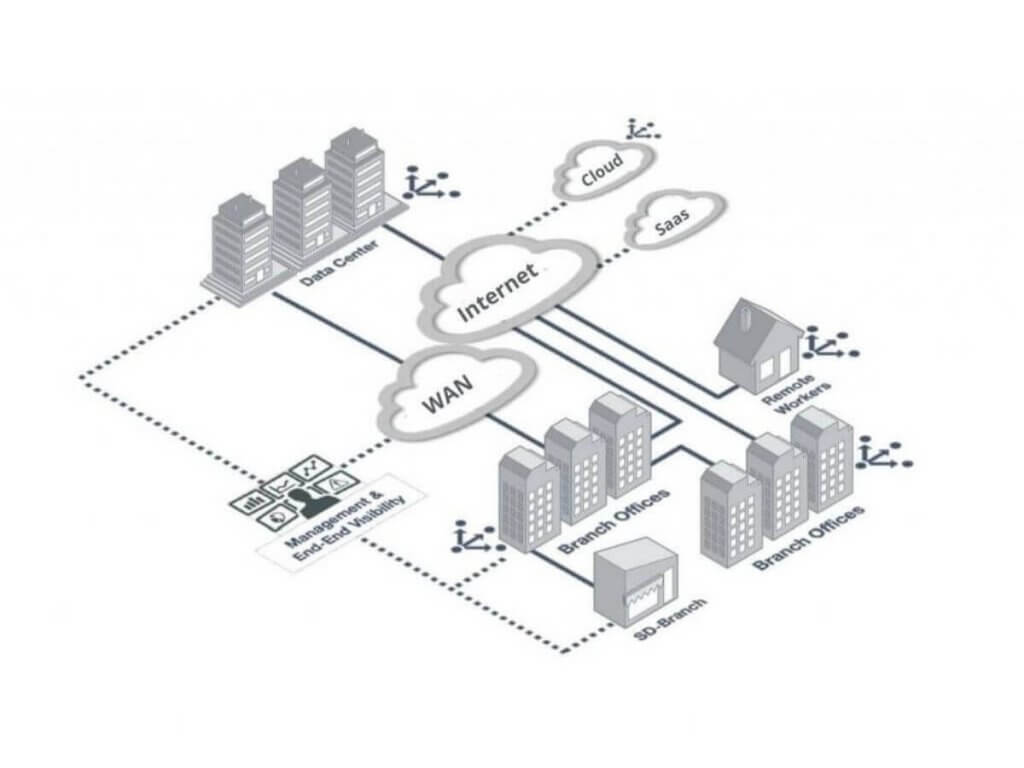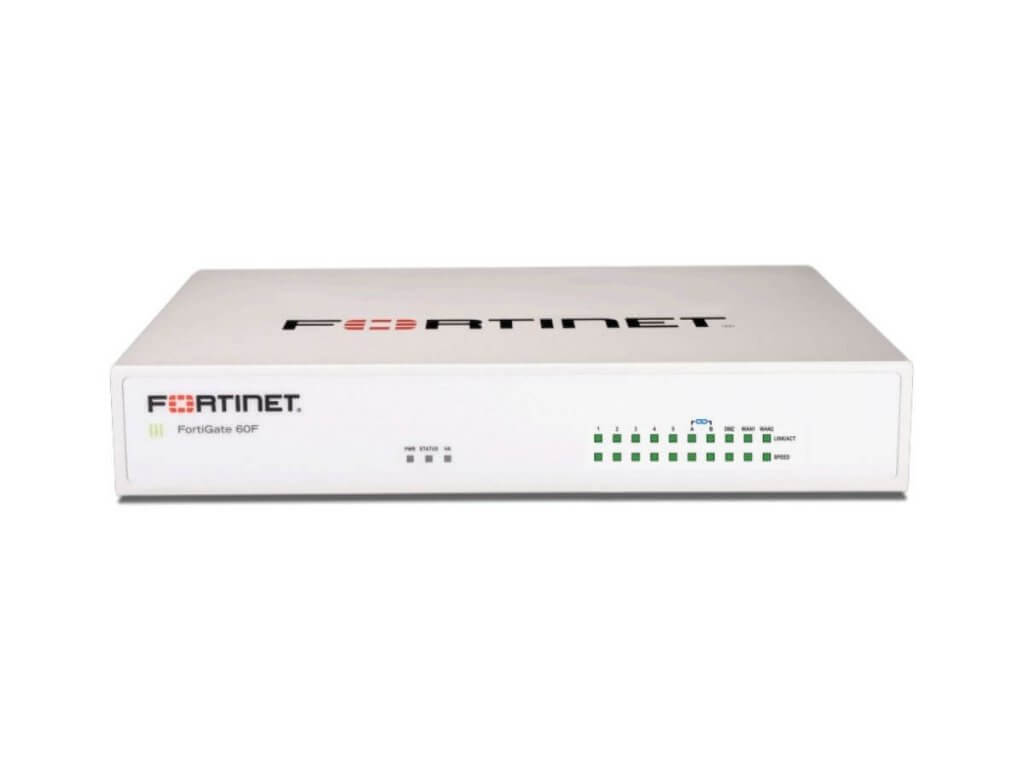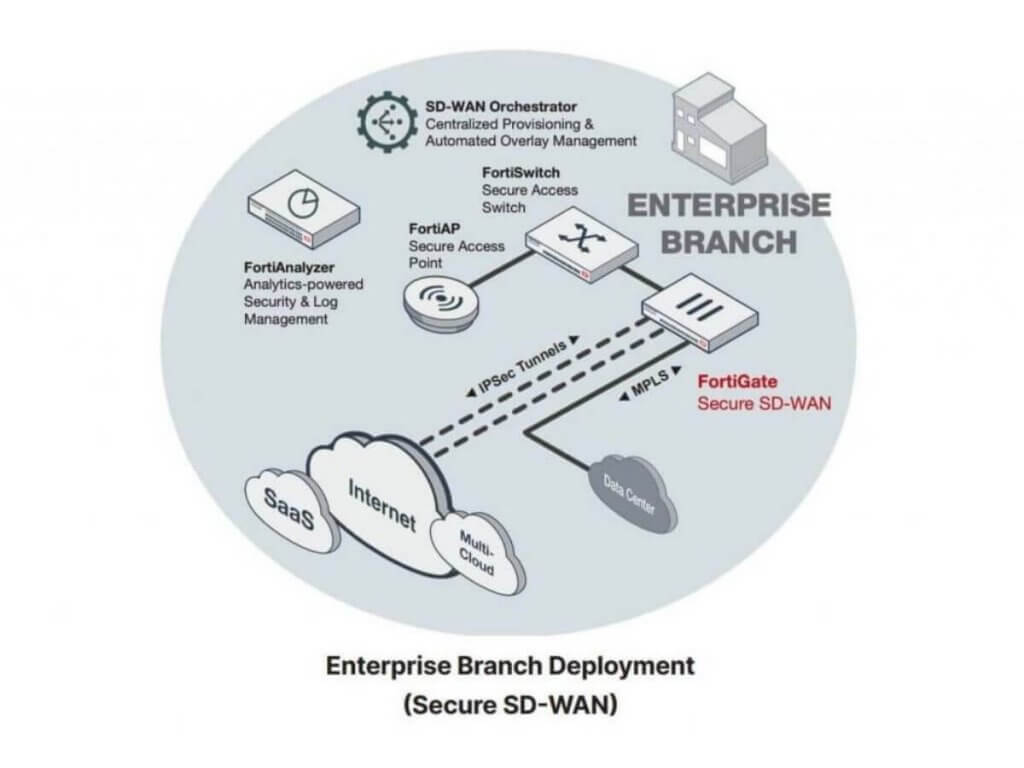SD-WAN or Software Defined Wide Area Network is a relatively new technology that has been gaining popularity in recent years. Many businesses are beginning to adopt SD-WAN as their primary networking solution due to its many benefits.
However, before making the switch, it’s important to understand what SD-WAN is and how it works. In this blog post, we will explore SD-WAN in detail and discuss its benefits and drawbacks. We will also provide tips for implementing SD-WAN in your business.
What is SD-WAN
SD-WAN or software defined wide area network is a revolutionary new technology that allows your company to make use of the internet’s speed, availability, and low prices to handle the majority of your company’s traffic. The core functionality is to enable organizations to securely connect their end-users to their applications. Its digitized WAN architecture enables establishments to use a diverse range of broadband internet services such as LTE, MPLS, or Multi-Protocol Label Switching.
Businesses can leverage any custom combination of these broadband internet services to build customized networks according to their business needs.
SD-WAN also allows global enterprises to route traffic from branch sites over regional internet connections rather than dealing with the delay and expense of routing all of that traffic through a central data center that might be thousands of miles or even a continent away.
A centralized control function in an SD-WAN secures and intelligently directs traffic over the WAN and directly to trusted SaaS and IaaS providers. This improves speed and provides a high-quality user experience, boosting productivity, and agility while also lowering IT expenses.
SD-WAN Architecture and Technology Explained
How Does SD-WAN Work
The traditional router-centric strategy spreads control across all network devices and simply directs traffic based on TCP/IP addresses and ACLs. This outdated approach is inflexible, complicated, wasteful, and cloud-incompatible, resulting in a terrible user experience.
An SD-WAN enables cloud-first businesses to provide consumers with a better application QoE and enables intelligent application-aware routing over the WAN by detecting applications. Each type of application receives the necessary QoS and security policy enforcement.
Secure local internet breakout of Infrastructure as a Service (IaaS) and Software as a Service (SaaS) application traffic from the branch ensures the best cloud performance while also safeguarding the organization from dangers.
SD-WAN Architecture
Traditional WANs, which rely on traditional routers, were never intended for cloud use. They usually necessitate backhauling all traffic from branch offices to a hub or headquarters data center, where enhanced security inspection services may be implemented.
Backhaul delays degrade application performance, resulting in a negative user experience and lost productivity.
SD-WAN model is built to fully support applications hosted in on-premises data centers, public or private clouds, and SaaS services like Salesforce, Workday, Dropbox, Microsoft 365, and others, all while delivering the highest levels of application performance.
SD-WAN Technology
SD-WAN technology is the use of software to better control network traffic across large geographic distances.
SD-WAN software moves data to the most efficient, logical, and cost-effective network channel by routing data over a range of network connections under a transparent overlay control system.
This path is determined by the application’s priorities and performance needs, which might vary in milliseconds.
SD-WAN technology is continuously growing, and there are many different SD-WAN options on the market right now. Without a doubt, SD-WAN networks are the future of company data networking and should be included in each network upgrade project.
Benefits of SD-WAN

SD-WAN offers remarkable benefits to business ventures looking to leverage cloud for business and improve their networking capabilities. Some of the most prominent benefits and functionalities that implementation of SD-WAN can offer enterprises include:
Cost Savings
By deploying SD-WAN, enterprises can cut down their costs on ongoing network maintenance. The secure remote internet connectivity capabilities of SD-WAN allow enterprises to remotely manage, upgrade and maintain their networks without having to hire more staff in different locations.
Agility
SD-WAN gateways offer real-time traffic management by monitoring the health and security of each WAN link connected to the main SD-WAN. If there is traffic congestion, SD-WAN automatically reroutes the incoming traffic and avoids delays.
Furthermore, the implementation of SD-WAN also enables network administrators and engineers to quickly create new services and update/modify the existing network services to meet the need-specific and time-specific business requirements.
This allows enterprises to remain agile, and current with the latest requirements by making necessary changes in a timely manner.
Application Performance
SD-WAN can allow businesses to efficiently increase or reduce performance for their specific applications and services. It can also be done on an application-by-application basis.
SD-WANs can also lower or eradicate the need to backhaul traffic through a central point of Internet access. It can ultimately reduce latency and improve the user experience for SaaS and other cloud-based applications.
Streamlined Procedures
Many labor-intensive processes, including establishing, implementing, and maintaining networks, are made easier using SD-WAN technology. IT employees have the chance to boost their value by automating numerous monotonous jobs.
This efficiency is the consequence of learning the organization’s actual demands and investing time in creating network regulations and protocols.
Increased Efficiency
The ability of SD-WAN to intelligently redirect traffic away from full or malfunctioning data pathways increases application performance in general. Latency is minimized and overall performance is enhanced by routing data depending on type, priority, and available resources.
Due to automated fail-over capabilities, this data routing also assures excellent network availability.
Remote Connectivity
Software-Defined WAN plays a critical role in remote reliable connectivity and digital security. As remote working and virtualization have become a critical component of today’s digital age, enterprises are rushing to cope with rapid digital transformation trends.
Recent studies have shown the importance of SD-WANs in remote workplaces as SD-WAN and increasingly deployed SASE or secure access service edge systems are increasingly becoming a key for achieving secure remote access and reliable performance for cloud applications.
Software-Defined WAN plays a critical role in remote reliable connectivity and digital security. As remote working and virtualization have become a critical component of today’s digital age, enterprises are rushing to cope with rapid digital transformation trends.
Recent studies have shown the importance of SD-WANs in remote workplaces as SD-WAN and increasingly deployed SASE or secure access service edge systems are increasingly becoming a key for achieving secure remote access and reliable performance for cloud applications.
Read more: SASE or Secure Access Service Edge.
The latest SD-WAN adoption trends also exhibit a flurry of SD-WAN deployments in the near future as it was revealed in the latest survey that last year, just over half (56%) of respondents said they were piloting, installing, or upgrading SD-WAN installations.
SD-WAN versus MPLS

Image via fortinet.com
The differences can be found by considering the three (3) key points which are cost, consistent security, and performance. In general, SD-WAN is better than MPLS in all these three (3) main focuses when compared together.
Below is the overview table that shows the differences between SD-WAN and MPLS:
SD-WAN | MPLS | |||
Cost | Integrated services greatly reduce costs. | Higher cost to own, build, and maintain. | ||
Security | Secure SD-WAN from Fortinet is deployed as an integrated function within an NGFW. | Require deploying a firewall and additional security functions. | ||
Performance | Recognizes applications and can adapt bandwidth accordingly. | Provide a fixed level of bandwidth. | ||
Complexity | If no built-in security, an add-on is required. | Web traffic backflowed to the data center. | ||
Visibility | Broad application visibility. | Limited due to packet routing. | ||
Scalability | Scalable with full mesh. | Take a longer process (up to months) to scale. |
Fortinet Is Named as the leader of 2023 Gartner® Magic Quadrant™ for SD-WAN
With Fortinet Secure SD-WAN, powered by the world’s only SD-WAN ASIC to enhance performance. Fortinet pioneered the market five years ago by pioneering a security-driven networking strategy to SD-WAN.
Their clients can get a higher quality of experience for their users, as well as a streamlined architecture with accelerated security, all powered by a single operating system to gain operational efficiencies across the WAN connection and cloud edges, thanks to their strategy.
These features of Fortinet Secure SD-WAN, they feel, led to their position in the Leaders Quadrant, where they have the highest capacity to execute.
Read more: Fortinet Security Fabric.
Fortinet Fortigate Is the World’s Most Trusted Secure SD-WAN

Image via fortinet.com
FortiGate firewall delivers fast, scalable, and flexible Secure SD-WAN for cloud-first, security-sensitive, and global enterprises. Fortinet’s Security-Driven Networking approach consolidates SD-WAN, next-generation firewall (NGFW), and advanced routing to:
- Deliver superior quality of experience at any scale.
- Accelerate network and security convergence, and simplify WAN architecture.
- Orchestrate consistent network and security policies.
- Achieve operational efficiencies through automation, deep analytics, and self-healing.
FAQS on Software Defined Wide Area Network
What is SD-WAN used for?
SD-WAN allows businesses to securely connect their branch offices and data centers over the internet. It enables organizations to overcome the challenges of traditional WANs, such as high latency and limited network bandwidth, by using a variety of transport technologies.
SD-WAN also provides granular control over how traffic is routed across the WAN, making it possible to optimize performance for specific applications.
What is the difference between WAN and SD-WAN?
Traditional WAN provides excellent QoS since they practically isolate packets to prevent packet loss through a single carrier-grade circuit connection. However, keep in mind that MPLS bandwidth is often more costly.
SD-WAN provides hundreds of application prioritizing choices as well as the ability to transport your most vital data traffic over the finest network link. This results in minimal delay and packet loss.
Additionally, if there is an outage, your traffic is immediately moved to another connection.
What is the difference between SD-WAN and VPN?
SD-WAN and VPNs both aim to do the same thing but in very different ways. Both are options for establishing an encrypted network connection with the potential of adding further security features. The following are some of the significant differences between the two options:
- SD-WAN solutions serve as gateways to a network of SD-WAN equipment that is completely linked, whereas VPNs provide point-to-point connections.
- SD-WAN allows for efficient traffic routing over different transport media, whereas VPNs are normally designed to deliver all traffic through a single network link.
Is SD-WAN a router?
SD-WAN is also known as a boundary router, and it’s different from a core router in that it only delivers packets within a single network. It can be used as an overlay to make managing current WAN edge routers easier by reducing reliance on routing protocols.
SD-WAN might also be a viable replacement for WAN Edge routers.
SDWAN Solutions Provider: Empower Workforce to Work Remotely

Image via fortinet.com
As the global SD-WAN market is anticipated to exceed $5.25 Billion by 2023, it is nothing but an indicator of the rising awareness and adoption of SD-WAN by enterprises globally.
From increased bandwidth at a lower cost, centralized network management across branch networks, holistic view of the networks, to more options for connection type.
Talk to us at Spectrum Edge, we offer an industry leading SD-WAN such as Fortinet FortiGate that delivers fast, scalable, and flexible Secure SD-WAN for cloud-first, security-sensitive, and global enterprises.